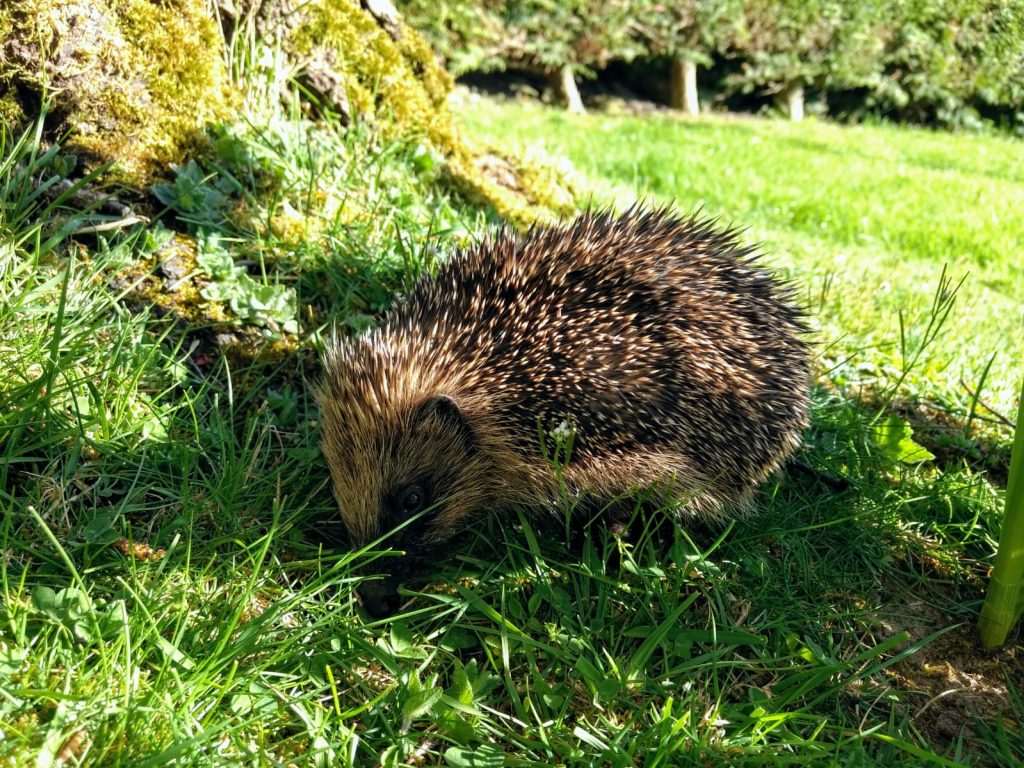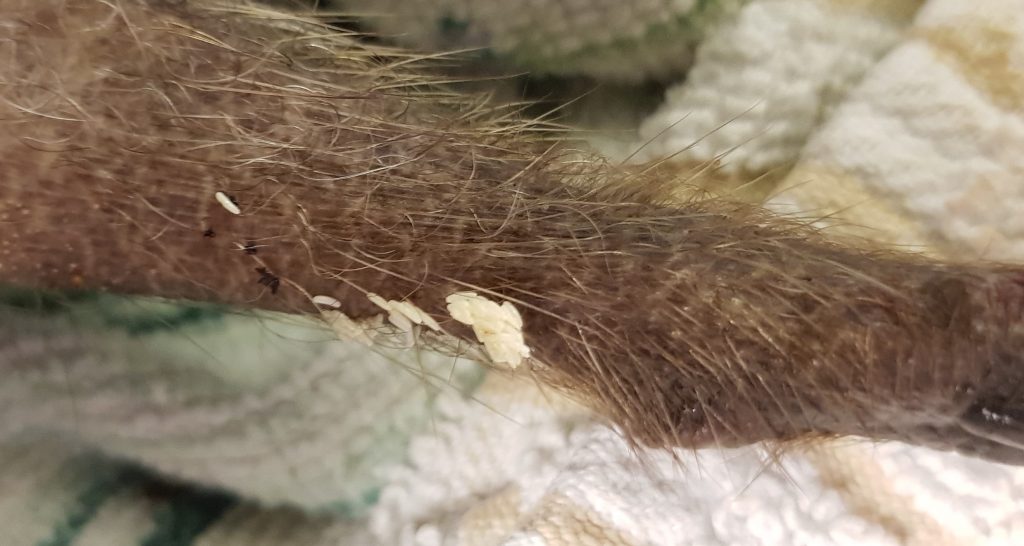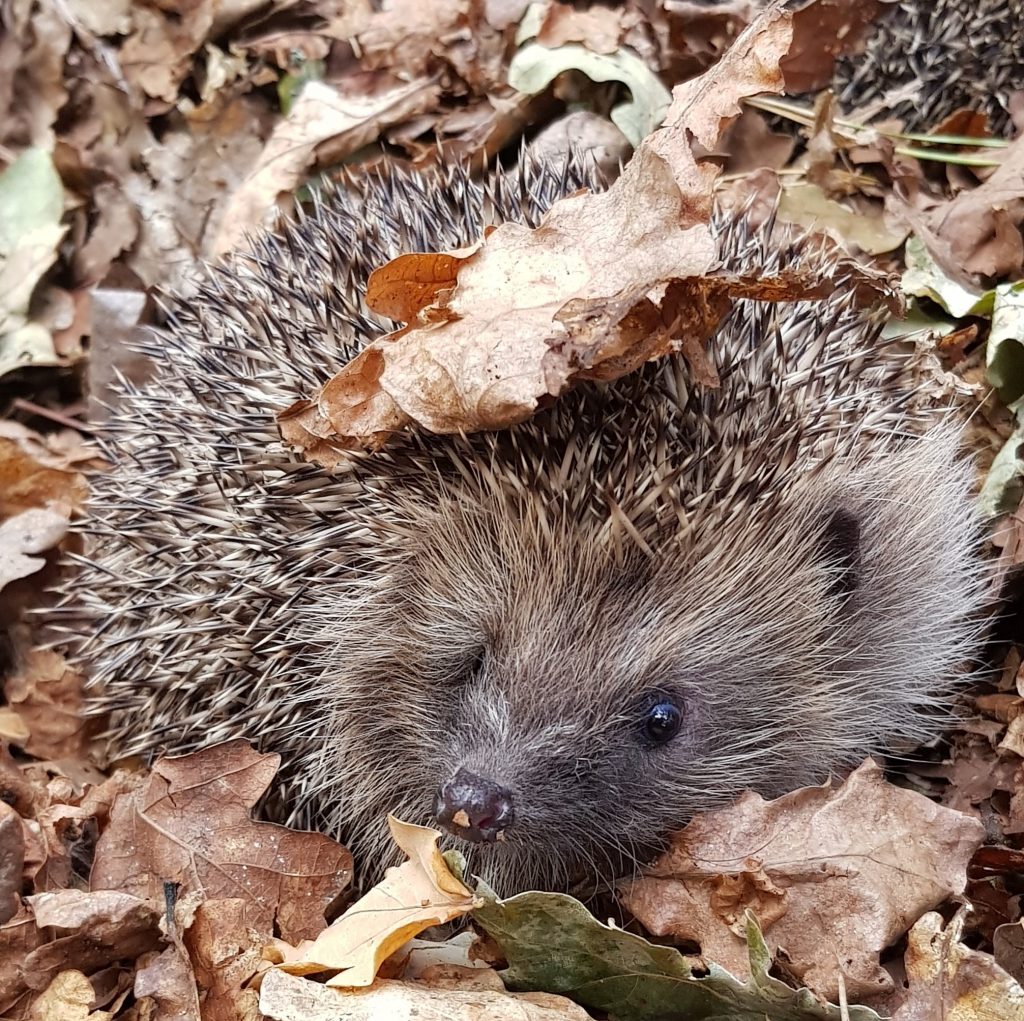If in doubt, please urgently seek advice from an experienced rescue.
Find a carer near you by using the Help Wildlife map or by calling the BHPS – 01584 890 801
Call us if we are your local rescue – 07947 361187
Keep scrolling to read it all, or click the following to skip to a section:
Out During the Day?
Flystrike
Do They Have an Injury?
Trapped in Netting?
Noises, Sunbathing / Swaying, Self-Annointing
How to Pick up and Contain a Hedgehog

Out During the Daytime?
Hedgehogs are nocturnal, so if you see a hedgehog out during the day time it nearly always indicates they are unwell or in trouble.
If you see one out during the day time that is acting ‘drunk’, wobbly, lethargic, as if it is ‘sunbathing’, or obviously hurt – then it definitely needs you to take quick action. Contain them immediately (instructions below), bring them inside away from flies, and call a rescue for help.
The one exception to this is if the hog is purposeful in its behaviour, most likely gathering leaf litter for a nest. This will be a female hog who is about to (or recently has) given birth. It is important you do not stress this hog in any way or stop her from returning to her young. A stressed female will abandon, hurt, or kill her hoglets.
Particularly in the summer, dehydration and flystrike are a severe and common problem for hedgehogs. Especially if they are out in the sun.
If a hedgehog is ever collapsed, on its side and floppy, possibly breathing with its mouth open – please take them to a vet immediately. They are suffering and need fast professional help.

Flystrike
The above photo shows fly eggs on the back leg of a hedgehog. Flies will lay the eggs behind eyelids, in the mouth/genitals/ears, under armpits – truly anywhere, and they will hatch into maggots quickly. The maggots will start eating through any tissue they are near, causing blindness if in the eyes, and horrible wounds. These eggs need to be removed by a trained professional as a matter of urgency.

Do they have an Injury?
Minor Injuries – might easily be able to be treated by a rescue even if they do not have an on-site vet. This could include a graze, a clean puncture wound, or a small cut.
Major Injuries – this includes big/deep wounds, exposed bone, facial injuries. Hogs with these issues will normally need a general anaesthetic to work out the full extent of the problem. Contact your local rescue or vet straight away to see if they have these facilities.
Dragging one limb – they have likely fractured it. Take care when handling and make sure they are not weighed down by heavy bedding in the container. Contact a vet/carer immediately.
Unable to retract a limb when curling – like the photo above, this often indicates the limb is fractured. Contact a vet/carer immediately.
Dragging both back legs – could be a double fracture or spinal issue. Handle very carefully: sliding a thick piece of board under their entirety before picking up helps to limit spinal movement. Get to a vet/rescue as soon as possible.

Trapped in Netting?
DO NOT RELEASE – take to carer/vet with the netting
If you find an entangled hog, please do not try to remove the netting. If you need to, cut the netting around the outside of the hedgehog.
Often the hog will be curled into a ball with the netting going into its belly area. Do not pull on the netting to try and see if it will come free, as you might be tightening it around a limb/their neck.
The hog needs to have the netting on its body removed under anaesthetic, and then monitored for at least 7 days for post-entanglement complications.

Concerned About a Certain Behaviour?
Swaying / Sunbathing = a very lethargic, likely dehydrated hedgehog. Do not force-feed any food or water but contain the hog, offer a shallow dish of water, and contact a rescue urgently.
Sporadic movements = potential neurological issue. Hard to describe until you have seen a hog struggling with jittery, ‘mechanical’, or unintentional movements. Could be due to trauma, swelling in the inner ear/brain, or ingesting a poison such as slug pellets.
Noises = hedgehogs make a variety of noises!
Normal noises include huffing and hissing, and cheeping like a baby bird is normal for newborns wanting food.
Bad noises which require the advice of a rescue include screaming/squealing (either severe pain or fear) or a ‘smokers cough’/’wheeze’ which is likely a high burden of the internal parasite, lungworm.
If you want to hear a range of hog noises click here
Self-Annointing = if you see a hedgehog contort and lick a frothy saliva over its back – you are watching it self-annoint! A perfectly natural behaviour for hogs, and most commonly seen when they taste something new.
How to Contain a Large Juvenile / Adult Hedgehog
- Prepare a high sided box (they can climb well!) or cat carrier by putting either a newspaper or old towel on the base. If you are limited on supplies, lots of kitchen roll will do.
- If using newspaper as bedding, prepare some scrumpled up sheets so the hedgehog can hide under them. If using a towel, have half as the base and fold the other half over the hedgehog – or give them another towel to hide in/under!
- Use gloves, or an old thick towel, to pick up the poorly hog and gently put into the container. Never handle with bare hands.
- Bring them inside, away from flies.
- Put a shallow dish of water inside the container.
- If they are bright and active, over the size of a tennis ball when curled, you can provide some cat or dog wet food, or cat/kitten biscuits.
- After you have delivered the hedgehog to a place of care – disinfect the container and dishes thoroughly.
Please do not try and care for a hedgehog without talking to a rescue or a vet. They are complicated creatures and often have issues, both external and internal, that take years of knowledge to spot. The longer you wait to get advice, the longer that animal could be suffering without you knowing.